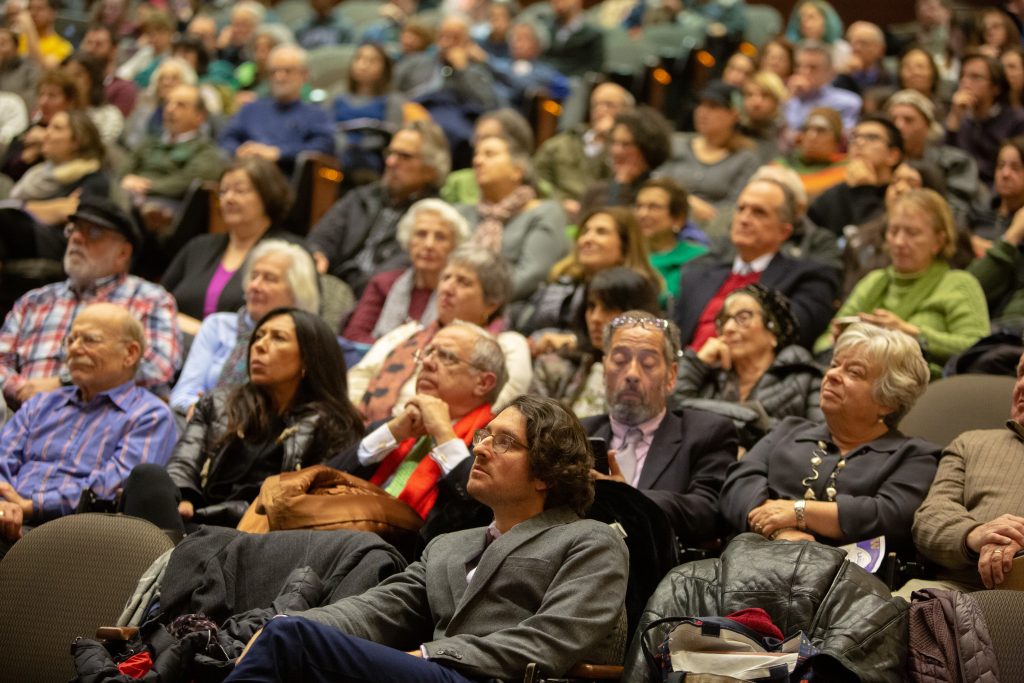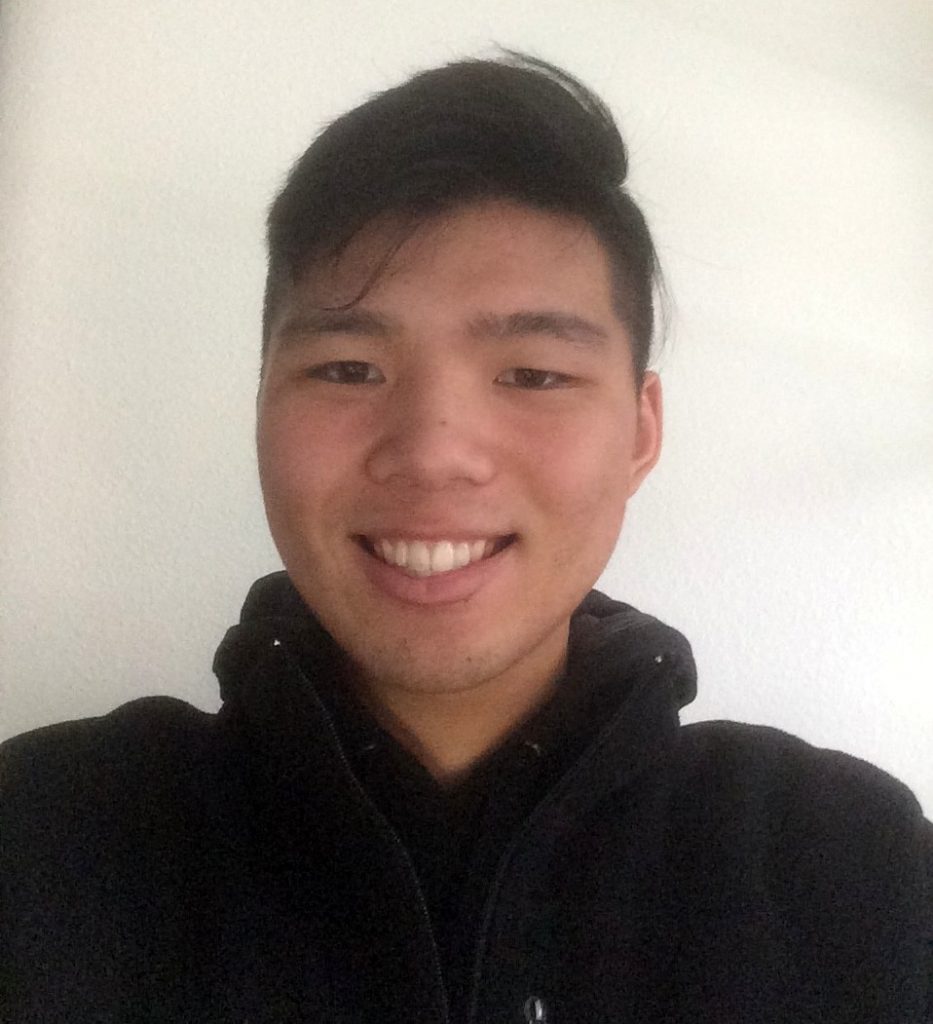
Audience members and Sephardic Studies Program Chair Devin E. Naar at Ladino Day 2018.
By Patrick Ho
Ladino Day was a unique experience for me. One thing that inspired me was the fact that there were so many people at the event, which shows that the awareness of Ladino and the Sephardic experience is becoming more widespread. Overall, the information discussed by François Azar was quite new to me, as he talked about Judeo-Spanish folktales, their origin, and several important factors that are key characteristics of Sephardic folktales. According to Azar, folktales come from traditional societies but are declining as the world becomes modernized. Additionally, Azar talked about how popular culture in the past, such as oral folktales, have simply become the heritage of a group of people in modern society.
When Los Ladineros read “The Jewish Parrot” onstage at Ladino Day, I felt very honored that I was about to see the members of the Ladineros in real life; I had read about them in Molly FitzMorris’ master’s thesis, as well as in news articles about Spanish citizenship. One of the most interesting parts of hearing “The Jewish Parrot” performed live was that the Ladineros modified some of the portions of the story to contextualize it within our own popular culture, such as making the location where Mr. Behar bought the parrot be at Nordstrom.

Illustration of Mr. Behar from “El Papagáyo Djudió” (The Jewish Parrot)
After the Ladineros finished, Azar discussed the history and features of Judeo-Spanish folktales. One key takeaway about Judeo-Spanish folktales is that since they are part of an oral tradition, those who are telling the tale may modify the story to their liking and style. This was demonstrated through the Ladineros changing the location of where the parrot was sold to Nordstrom in order to make the story more Seattle-oriented.
Sephardic people also modify their stories by adopting folktales from other groups of people and adding Sephardic elements to make the story relatable to the audience, for instance, changing a drink in a story to Turkish coffee, or changing some words to reflect Sephardic culture. According to Azar, Sephardic storytellers are really good are recreating the elements of a folktale and making them Sephardic-centric. Another interesting fact was that Azar actually used his own grandfather’s image to model his character of Mr. Abraham Behar in “The Jewish Parrot.” Azar also showed the audience a picture of his grandfather on the slideshow, and he looked extremely similar to the character of Mr. Behar.
Overall, Ladino Day was a very pleasant experience for me. It was the first time that I have been to an event that honored something of Sephardic culture, in this case, Ladino. In addition, it was great to hear Azar speak; he is definitely an intelligent man who works hard to bring awareness to the culture and experience of his people.
* Watch the full video of Ladino Day 2018 now *
Further reading
- “Seattle is a Sephardic country: Behind the scenes of Ladino Day 2018” by Makena Mezistrano (2019)
- “Aki estamos (we are here): Revitalizing Ladino in Paris and beyond” by Molly FitzMorris (2018)
- To read more about past Ladino Days, visit our Ladino Day archive
 Patrick Ho is an undergrad student at the University of Washington. During the 2018 Fall semester Patrick attended Devin Naar’s course “The Sephardic Diaspora: 1492-Present.”
Patrick Ho is an undergrad student at the University of Washington. During the 2018 Fall semester Patrick attended Devin Naar’s course “The Sephardic Diaspora: 1492-Present.”







Leave A Comment